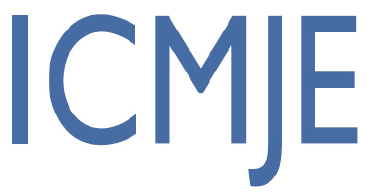





The effects of drug and psychodrama group therapy on alexithymia and sympathetic skin responses in social anxiety disorder (tur)
Nalan Kalkan Oğuzhanoğlu1, Mustafa Bayraktutan2, Gülfizar Sözeri Varma1, Tuğçe Toker Uğurlu11Departmen Of Psychiatry, Pamukkale University, Denizli, Turkey2Edirne Sultan 1. Murat State Hospital, Edirne
INTRODUCTION: The aim of this study was to evaluate the levels of emotion recognition, expression and discrimination, and sympathetic skin responses (SSR), the effects of drug and psychodramatic group therapy on social anxiety disorder (SAD).
METHODS: The study included 32 patients with SAD and 16 healthy controls. Sixteen patients in the SAD group received only medication (SAD-I), 16 patients underwent additional psychodramatic group therapy (SAD-II). Participants were applied Liebowitz Social Anxiety Scale (LSAS), Toronto Alexithymia Scale (TAS-20), Facial Emotion Identification and Discrimination tests (FID, FDSC); during the application FID, sympathetic skin responses were measured.
RESULTS: The scores of SAD-I and SAD-II groups were higher than the control group before the treatment. Although LSAS scores were decreased in SAD groups after treatment, it was still higher than the control group. There was no difference in TAS-20, FID and FDSC scores between the groups after the treatment. Patients with SAD compared to control group SSR rates were found higher before the treatment, more autonomous activity to negative stimuli, sensitivity to positive stimuli was less than control group, after the treatment; SSR rates were determined to be decreased significantly. While patients were finding a chance to experience different types of communication, providing awareness of the situations in which they experience anxiety and accompanying physical symptoms in group therapy, they showed more improvement in recognizing emotions compared to drug treatment.
DISCUSSION AND CONCLUSION: While both drug and group therapy provide the ability to reduce anxiety symptoms, improve recognizing and differentiating emotions. Our results have shows that psychodramatic group therapy provides more benefits in recognizing others' feelings.
Keywords: social anxiety, alexithymia, sympatic skin response
Sosyal anksiyete bozukluğunda aleksitimi ve sempatik deri yanıtları üzerine ilaç ve psikodrama grup terapisinin etkileri (tur)
Nalan Kalkan Oğuzhanoğlu1, Mustafa Bayraktutan2, Gülfizar Sözeri Varma1, Tuğçe Toker Uğurlu11Pamukkale Üniversitesi Tıp Fakültesi, Psikiyatri Ana Bilim Dalı, Denizli2Edirne Sultan 1. Murat Devlet Hastanesi, Edirne
GİRİŞ ve AMAÇ: Sosyal anksiyete bozukluğunda (SAB) duygu tanıma, ifade ve ayırt etme düzeylerinin ve sempatik deri yanıtlarının (SDY) araştırılması, ilaç ve psikodramatik grup terapisinin etkilerinin incelenmesi amaçlanmıştır.
YÖNTEM ve GEREÇLER: Çalışmaya 32 SAB olan hasta ve 16 sağlıklı kontrol katılmıştır. SAB grubunda 16 hasta sadece ilaç tedavisi alırken (SAB-I), 16 hastaya ilaç tedavisine ek psikodramatik grup terapisi uygulanmıştır (SAB-II). Katılımcılar Liebowitz Sosyal Anksiyete Ölçeği (LSAÖ), Toronto Aleksitimi Ölçeği (TAÖ-20), Yüzde Dışa Vuran Duyguları Tanıma ve Ayırt Etme Testleri (YDTT, YDAT) ile değerlendirilmiş, YDTT uygulaması esnasında SDY ölçümleri yapılmıştır.
BULGULAR: Tedavi öncesi SAB-I ve SAB-II gruplarında ölçek puanları kontrol grubuna göre yüksek bulundu. Tedavi sonrası SAB gruplarında LSAÖ puanları azalmış olmakla birlikte kontrol grubuna göre yine yüksekti. Tedavi sonrası gruplar arasında TAÖ, YDTT ve YDAT puanlarında farklılık saptanmadı. SAB hastalarının tedavi öncesi kontrol grubuna göre SDY’leri yüksekti, negatif uyaranlara karşı daha fazla otonom aktivite gözlendi, pozitif uyaranlara karşı duyarlılık daha azdı., Tedavi sonrasında oluşan SDY’de azalma olduğu saptandı. Grup terapisinde hastalar iletişimin farklı şekillerini deneyimleme, anksiyete yaşadıkları durumlar ve eşlik eden bedensel belirtiler konusunda farkındalık sağlama olanağı buldu. Grup terapisine katılan hastalar duyguları tanıma konusunda ilaç tedavisi alanlara göre daha fazla gelişme gösterdiği saptandı.
TARTIŞMA ve SONUÇ: Hem ilaç hem de ilaca eklenen grup terapisi anksiyete belirtilerinin azalmasını, duyguları tanıma ve ayırt etme becerilerinin artmasını sağlamıştır. Sonuçlarımız grup terapisinin diğerlerinin duygularını tanıma konusunda daha fazla yarar sağladığını göstermektedir.
Anahtar Kelimeler: sosyal anksiyete, aleksitimi, sempatik deri yanıtı
Manuscript Language: Turkish
(2305 downloaded)










